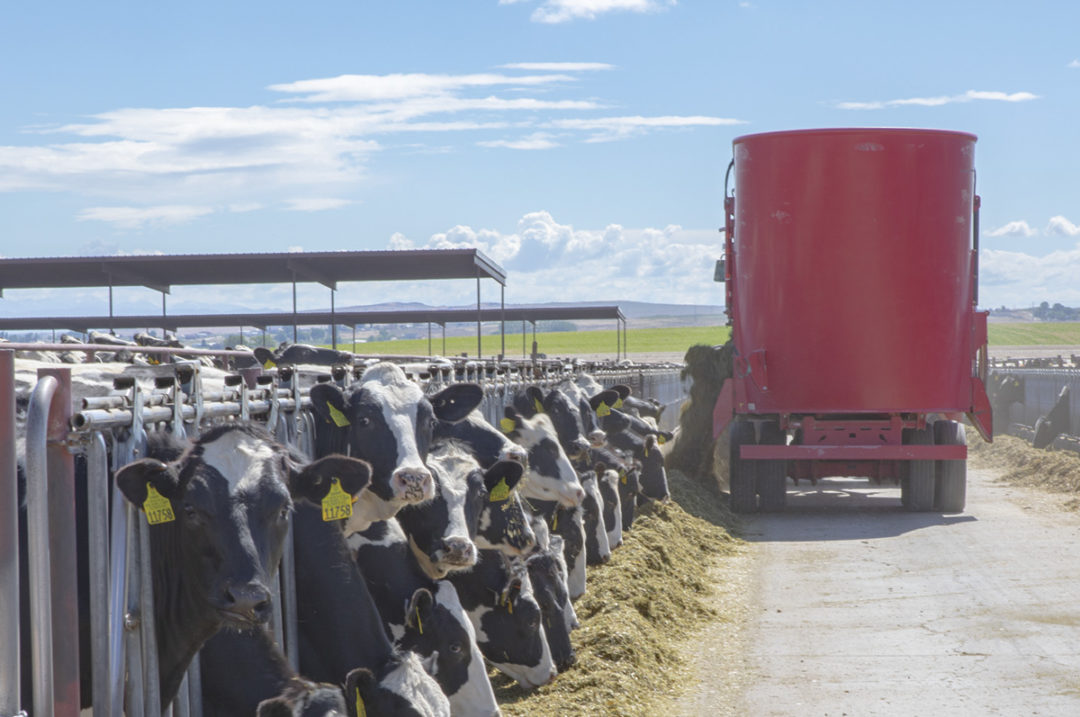In the realm of dairy farming, a cow's daily routine plays a pivotal role in her well-being and productivity. Cows thrive on consistency, particularly when it comes to their dietary needs. Nutrition is an irreplaceable factor in ensuring the health of these animals and the financial success of a farm. Amid the myriad factors that influence success, one stands out – the human element.
In the dairy industry, well-trained staff and effective communication are the cornerstones of triumph, ensuring that cows consistently receive the right diet. We've all witnessed meticulously prepared rations fall short due to poor mixing, delivery or feedbunk management. Bridging the gap between the ideal and the practical reality of a cow's diet requires a team of educated, dedicated and attentive individuals.
This article explores four critical foundations that underpin successful nutrition programs: safety, accuracy, consistency and communication. These pillars are essential for maintaining healthier, more productive cows and the long-term profitability of the entire enterprise.
Safety
In the hustle and bustle of a farm, safety should always take precedence, not just for the workers but also for those in their vicinity. It's easy to get caught up in the drive for efficiency, but never at the expense of safety. There are no inherently safe tasks – what truly counts are safe employees and well-established procedures. In the dairy sector, working with heavy machinery, particularly in the context of feeding cows, presents a significant challenge. Those handling this task carry a great responsibility. They must stay alert not only for their own safety but also for others who may unexpectedly cross their path in the feed area. Safety begins with the basics. Before conducting any maintenance work on tractors or feeding equipment, it is imperative to remove ignition keys and cut off all power to electrical equipment.
Even everyday actions, such as getting on or off a tractor or truck, require attention. Always approach and leave facing the ladder or cab and maintain three points of contact until you safely reach the platform or the ground. Ensure that the equipment has come to a complete stop before disembarking, avoiding hasty dismounts. Loose-fitting clothing poses a particular risk, as it can become entangled in moving parts, especially around items like power take-off (PTO) shafts. When servicing is necessary, always remember to turn off the equipment.
Safety also extends to handling silage faces. These towering silage piles pose significant risks, leading to accidents and fatalities each year. The silage face can collapse unexpectedly, making it crucial to avoid standing or working directly in front of it, even when inside a vehicle. When accessing the top of the pile, maintain a safe distance.
Furthermore, it is advisable for all farm workers to wear high-visibility clothing or safety vests. The ultimate objective is for everyone to return home safely at the end of each day.
Accuracy
Nutritionists excel in formulating diets using ration-balancing software, but the actual diet consumed by a cow often differs from the formulation. Feeder errors, equipment issues, scale-calibration problems, irregular feed push-up routines and ingredient variations are among the many factors impacting accuracy. Employee training, feedback, proactive equipment maintenance and periodic feed testing are essential in minimizing this gap.
Feed management software is a potent yet underutilized tool for ensuring diet accuracy. These software applications can track the quantity and cost of feeding discrepancies, enabling managers to provide employees with timely feedback on their performance. When employees realize the financial implications of feed errors and understand the hidden costs in terms of a cow's health and productivity, it can be a game changer. Software can also reveal when employees might be cutting corners in loading or unloading feed, allowing for constructive conversations and encouragement. Behavior often shifts significantly when employees know they're being monitored. Feed management software is also useful for tracking feed inventory, aiding in better forecasting future needs to prevent shortages of key feed ingredients.
Consistency
A decade ago, our company, under the guidance of Dr. Tom Oelberg, introduced a systematic approach to assess the operational efficiency of dairy feeding programs, known as the total mixed ration (TMR) audit. A TMR audit offers a comprehensive evaluation of a dairy's feeding process, covering aspects from feed-ingredient management and storage to the mixing, delivery, push-up and consumption of feed. TMR audits identify sources of variation in diet composition, distribution and consumption. Representatives conduct numerous TMR audits each year, inspecting loads of TMR for consistency along the feedbunk, feedbunk delivery and management, feed center efficiency, shrink and mixer maintenance. The aim is to ensure that cows consistently consume a balanced diet, influencing both their health and productivity. Here are some best practices to enhance diet consistency:
- Maintain consistent feeding times and locations daily to avoid a decrease in dry matter intake (DMI).
- Conduct regular feed testing, particularly for dry matter and input these values into your feed management software. Collaborate with your nutritionist to determine the ideal testing frequency.
- Use mold-free feed ingredients and avoid feeds that are excessively wet or warm or have an unusual odor.
- Avoid overfilling a mixer, as it leads to inconsistent and inaccurate mixing.
- Provide feed in all available bunk spaces.
- Regularly push feed and redistribute as necessary to ensure 24/7 access for all cows in the pen.
Communication
Most employees take pride in their work and aspire to excel. However, if we haven't clearly defined our expectations or effectively communicated job responsibilities, workflow and other essential information, we're setting employees up for failure and ourselves up for disappointment. Countless dairy managers and owners have expressed frustration with statements such as, “They should just know that this is important,” or “This is so obvious.” Further inquiry often reveals that expectations haven't been communicated effectively. It's crucial to remember that just because something appears obvious and common sense to us, we can't assume the same for the employee, especially if they haven't worked in agriculture before.
These four pillars of feeder success serve as a constant reminder that dairy farming is a complex and interconnected system where even minor adjustments can yield significant results. Comprehending and implementing these principles is vital for ensuring a successful nutrition program and a safe environment for everyone on the farm. In this ever-evolving industry, a commitment to safety, accuracy, consistency and transparent communication is the key to nourishing both the cows and the prosperity of the farm.







